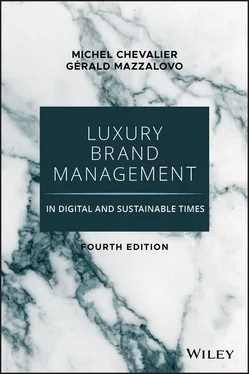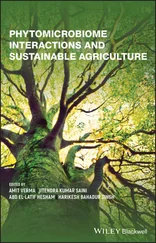Now that we have split the production side into the brand and its manifestations and the perception side into its social and individual parts, we are able to position all the authors' definitions we have mentioned so far (see Figure 1.2).
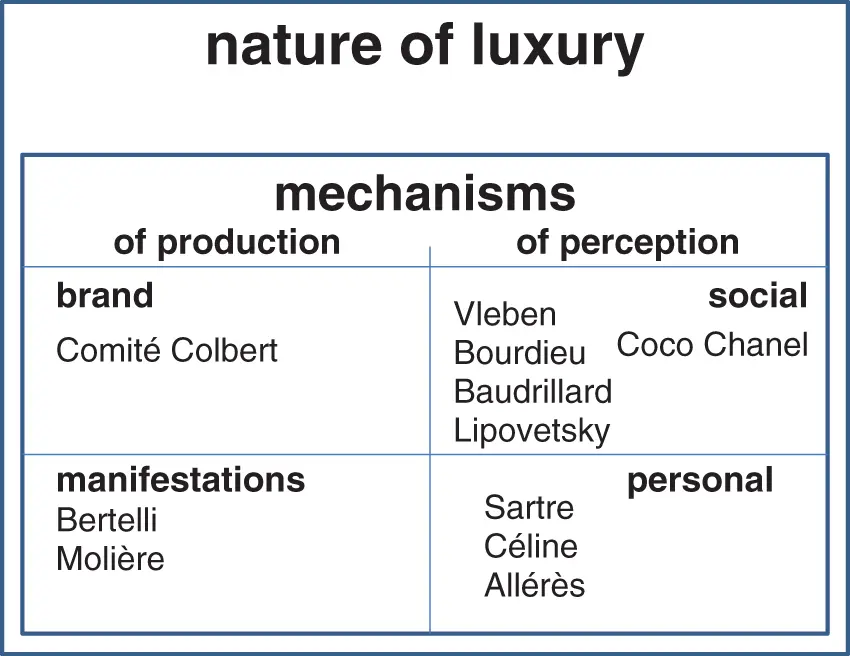
Figure 1.2 Positioning of Some Authors on the Analytical Scheme of the Definitions of the Notion of Luxury
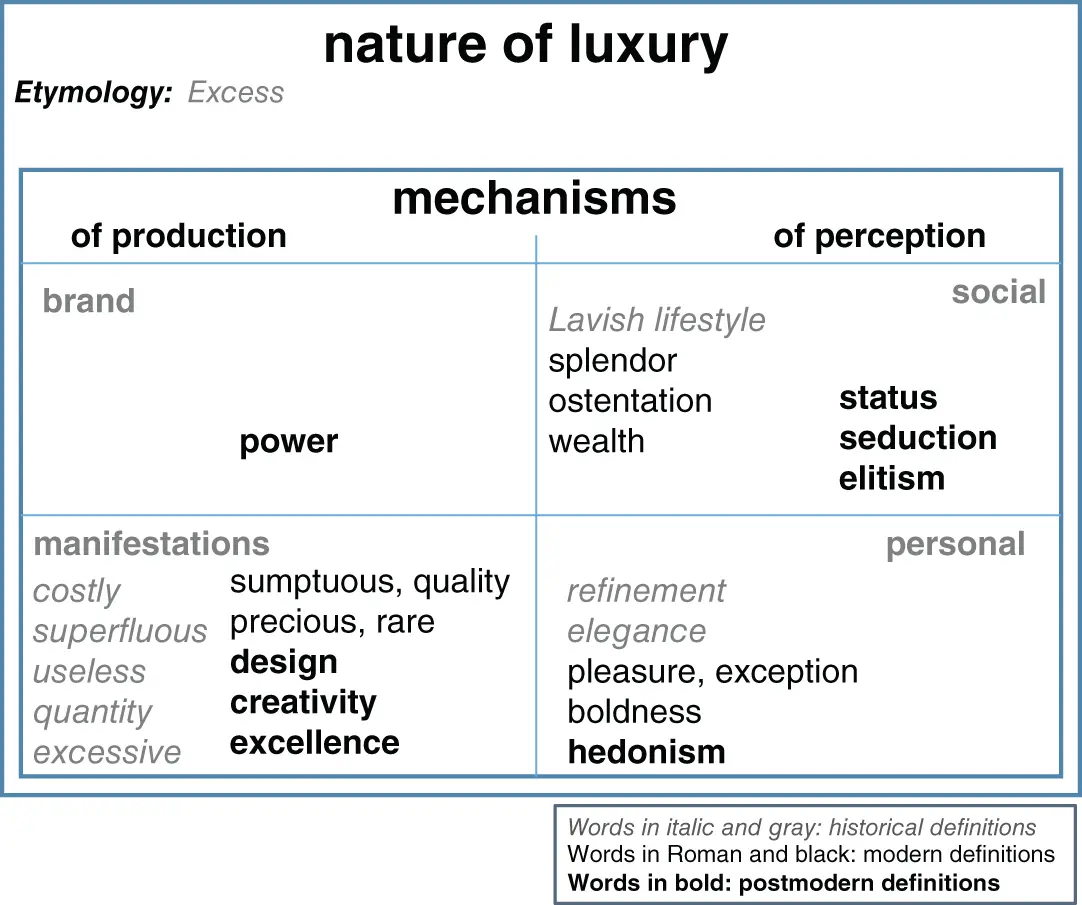
Figure 1.3 History of the Semantic Evolution of the Definitions of the Notion of Luxury
In order to close the loop, it remains to revert to the semantic history of the term luxury described earlier and insert the meanings identified in our analytical scheme (see Figure 1.3).
The progressive transformation of the concept becomes more noticeable. A number of modern or postmodern values (referring to lifestyle brands) that characterize contemporary luxury like elitism, hedonism, aesthetic creativity, and seduction can be regrouped within clusters. These meanings are mainly concentrated around social luxury perceptions and the positive connotations of its manifestations: it is a symptom of the growing social importance of luxury, especially through the intermediate luxury consumption, but it also reflects the rise of the brand as its main vehicle—without a doubt, the major and structuring phenomenon of this new market.
Now that luxury is imposing its positive connotations to the contemporary world, how do consumers perceive it? What are the values they identify with luxury?
An answer can come from a very relevant study, led by de Barnier, Falcy, and Valette-Florence, on a sample of over 500 persons in France. It allows synthesizing the values currently associated with luxury by consumers. This investigation offers the interest to compare three independent scales of value that explored the perception of luxury by consumers done by Kapferer, 13Vigneron and Johnson, 14and finally by Dubois et al. 15
The statistical convergence of the three models highlights four main types of values, which we classify by order of intensity. In fact, we may recognize here four essential dimensions that consumers consider to be essential for a brand to belong to the luxury world.
1 Elitism (“distinction,” “select”) is the dimension most present simultaneously on the three scales. The historical social dimension of luxury still plays its role fully as an indicator of social success—or a simulacrum of that success. The creation of a sense of belonging to a selected group appears as the essential experience dimension. The creation of a feeling of belonging to a chosen group appears to be the essential dimension of the experience.
2 Unsurprisingly, product quality and high prices are also significant characteristics. The concept of quality can extend to all brand manifestations such as communication, real and virtual places, people, and so on.
3 In the third position we find personal emotional and affective elements, such as hedonism, but with a weaker correlation. This is the generation of pleasure and emotions, key components of postmodern consumption, which applies here to luxury brands.
4 Finally, the power of the brand (resulting from past decisions and actions) appears at the side of reputation and uniqueness.
Through this exercise, the consumer himself gives us his own definition of luxury. And although the fundamental intuition of sociologists (distinction) is confirmed, we discover that the consumer is not less attentive to the means of production of the luxury object and brands than to its personal and social impacts (see Figure 1.4). Yet again, luxury cannot be reduced to its sole effects of display.
Other considerations can be drawn from this study.
First, most consumers think and live luxury only in terms of brands. Could luxury be experienced outside of the brand world? We could refer to the imaginary world of two French novels, À Rebours 16and Les Choses 17: two portraits of characters, consumers obsessed by luxury. In both cases, the brands are absent from their universe: it is the quality of the products that holds their attention. Today, on the contrary, brands appear as the natural vehicles by which luxury plays its primary role in postmodern consumption.
Secondly, each brand develops its own specific strategies, which do not necessarily cover the four sectors of our analytical scheme.
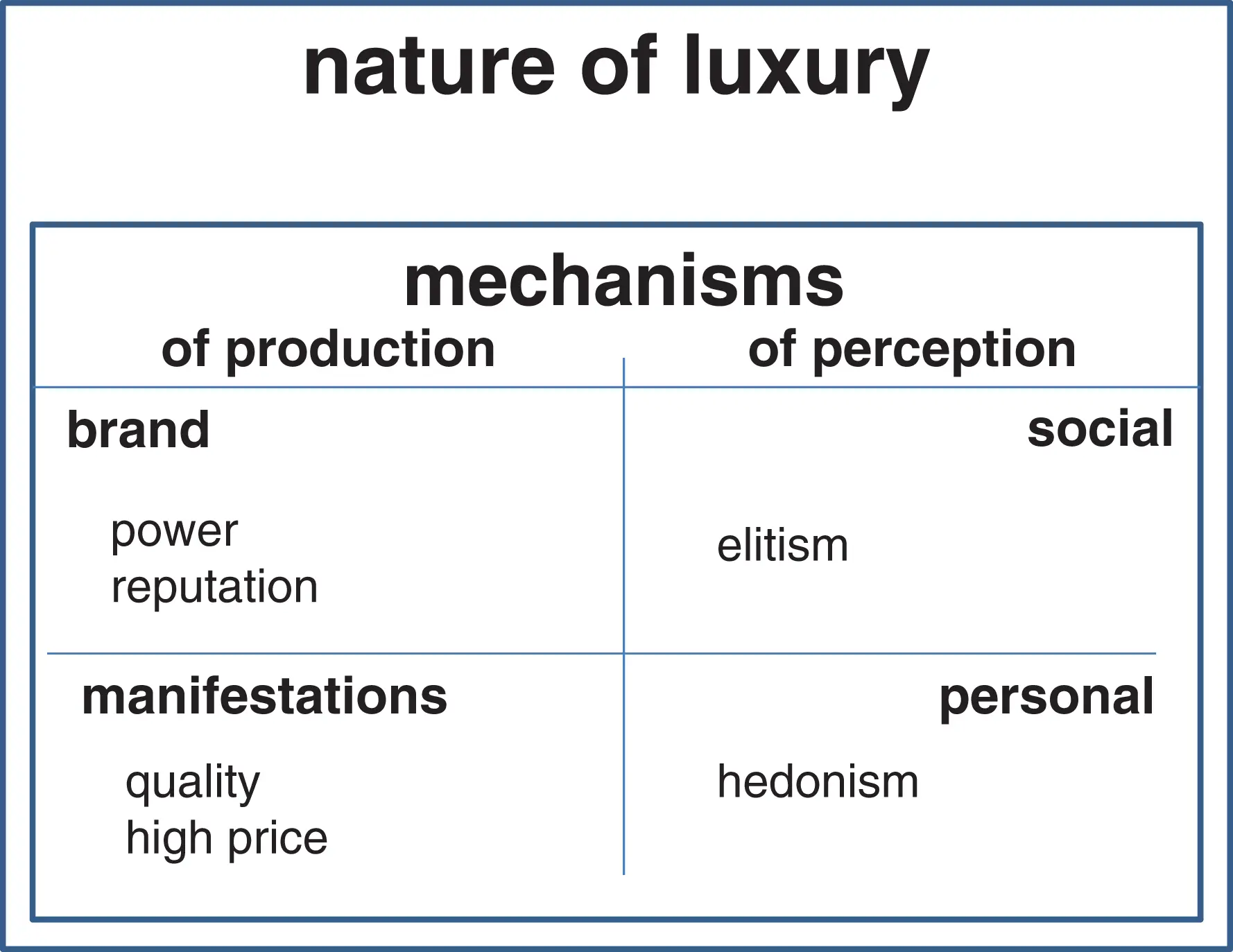
Figure 1.4 Positioning of the Definition of Luxury Given by Consumers
Finally, the study of de Barnier, Falcy, and Valette-Florence demonstrates the existence of a continuum of luxury with increasing intensity, from mass luxury to unaffordable luxury, via intermediary luxury.
The Semiotic Square of the Consumption Values
We briefly present a tool that will be described in more detail in Chapter 7. We anticipate its use because it can support some reasoning about luxury, especially with regard to the logics of consumer behavior, and thus refine our approach to a general definition of luxury.
This diagram is called a semiotic square. It is a way to present a group of contrary and contradictory concepts focusing on the manner in which they are opposed. These oppositions are dynamic, as the tension between the antagonists produces effects of meaning. (The same way as in an action movie where the opposition between “good” and “evil,” between the hero and his opponent, can be the engine of the plot.)
This is also true for the discourses on the motivations of luxury consumers. The diagram of consumption values was originally developed by Jean-Marie Floch to help in the design of a supermarket layout. It covers the distribution of the definitions we have outlined earlier and allows exploring the motives of consumption luxury.
It distinguishes four types of logic ( Figure 1.5), which are some of the motivations of possible purchase and who oppose each other or contradict: the logic of need (“we have no more bread”); the logic of interest (“I already have enough coffee at home, but I want to take advantage of this promotion”); the logic of desire (“an exotic dish is a way to travel”); the logic of pleasure (“I am crazy about chocolate”). It goes without saying that a purchase can perfectly obey several logics at the same time, despite their apparent contradictions: I can choose to buy organic chocolate or premium pasta.
If we seek to classify the values associated with luxury in this distribution, we realize that the logics of desire and pleasure on the right side of the square will be the predominant engines. Hedonism is in the logic of pleasure activated by diversionary/aesthetic values; elitism is located on the top right vertex, with the mythical/utopian values. As we noted, luxury brands, even more than others, must make customers dream of possible worlds and provide experiences intense in emotions, dreams, and pleasure.
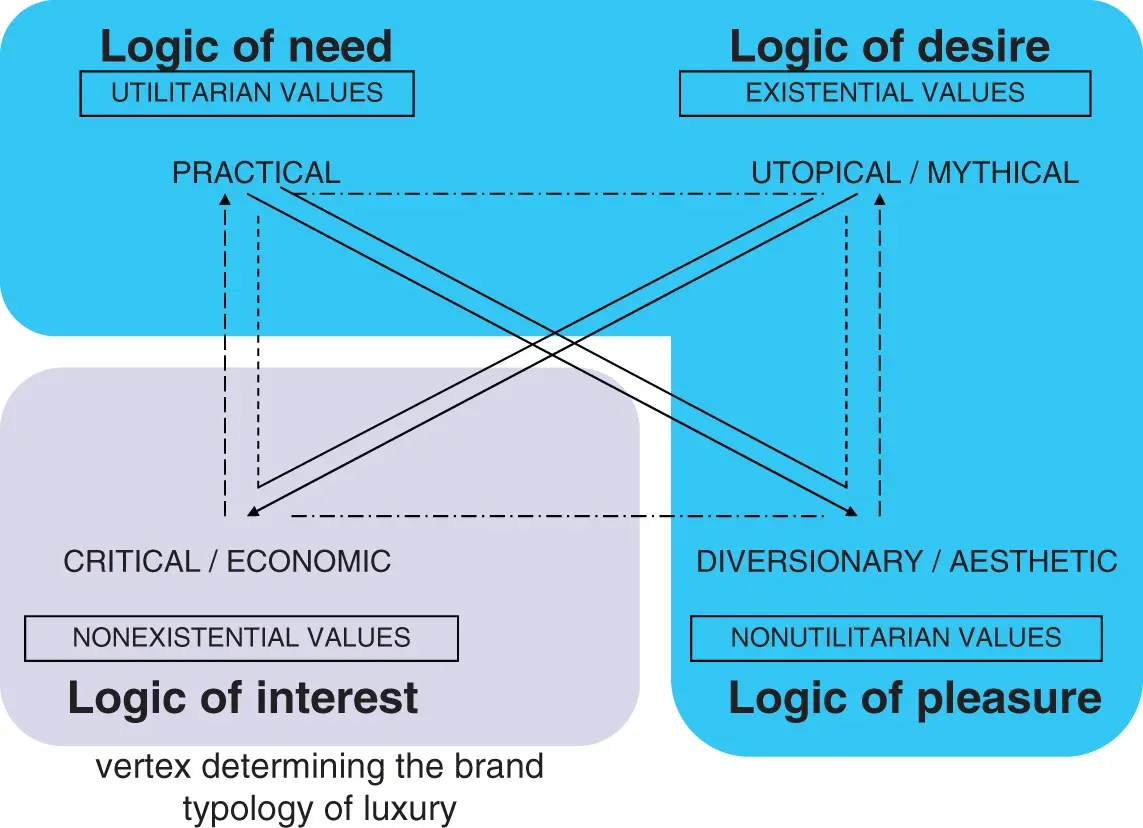
Figure 1.5 Semiotic Square of Consumption Values
Читать дальше
